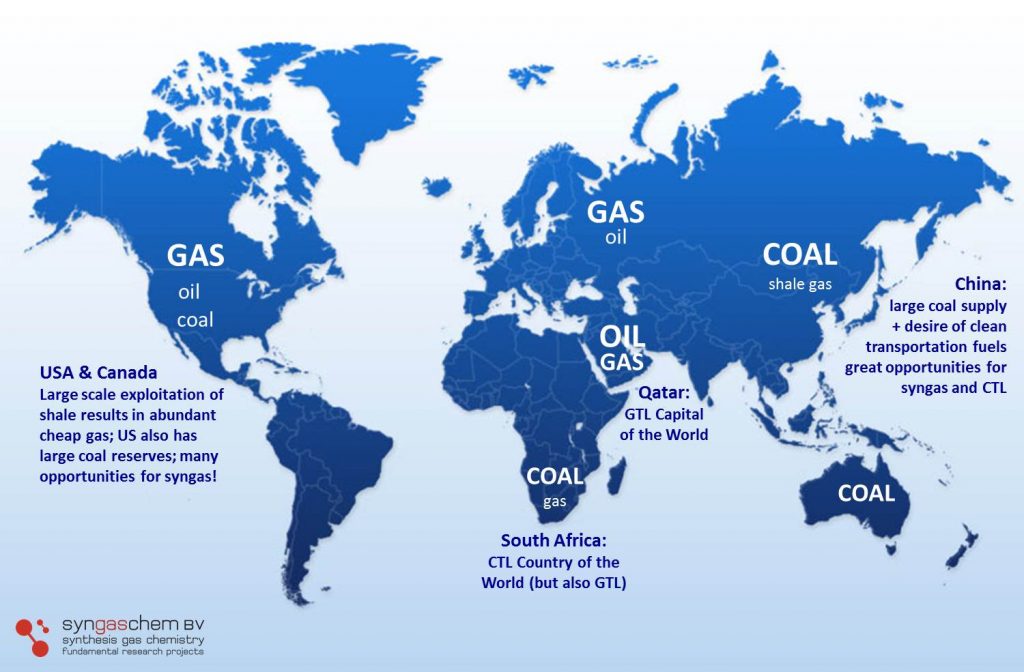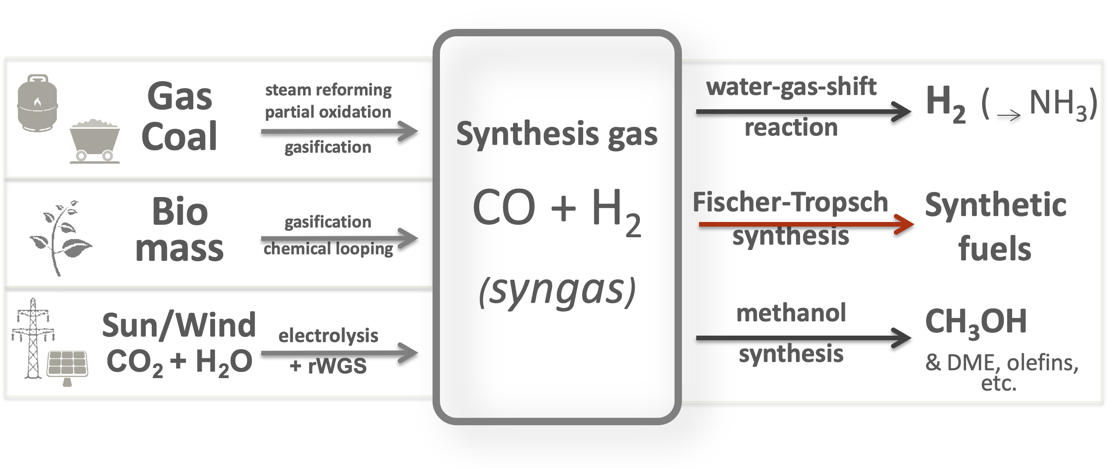Our vision
Clean Coal to Liquids as a Transitional Technology
Liquid fuels such as gasoline and diesel are attractive as medium for storing and transporting energy, as their energy content per unit of volume and weight is unsurpassed, and the necessary infrastructure is widely available. These factors make conversion technologies as gas, biomass and, not in the least, coal-to-liquids attractive options. Synthesis gas, a mixture of carbon monoxide and hydrogen, is the key intermediate in all these conversions. Hence, the chemistry of synthesis gas (or syngas) is a key topic in catalysis.
Our partner Synfuels China Technology Co., Ltd. Is a renowned specialist in converting coal to liquid fuels in a clean way, based on a more than 30 years long tradition of R&D. Syngaschem BV is proud to be Synfuels China’s partner for fundamental research in catalysis and surface chemistry in The Netherlands.
On the long term, syngas derived from CO2 and solar H2 provides the perspective of a sustainable route to non-fossil fuels, which still offer the energy density and convenience of today’s transportation fuels. Fundamental knowledge and well-trained people form the key ingredient for optimizing these technologies.
Our current strategy
Green electricity supply notoriously fluctuates by nature and not by demand. Therefore, permanent storage of electrical energy is a key issue in today’s science and technology. Our current approach is to convert water and CO2 into syngas as an intermediate for synthetic fuel production. H2 production by water electrolysis and CO production by reverse water gas shift reaction are both processes, that can be propelled by new insights into the fundamentals of electrocatalysis, material science and reactor engineering, while insights into Fischer-Tropsch catalysis can generically benefit Clean CTL and Green Electricity Storage alike.


